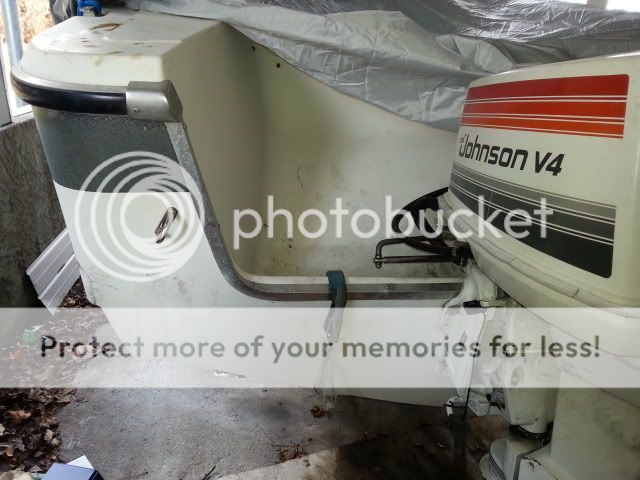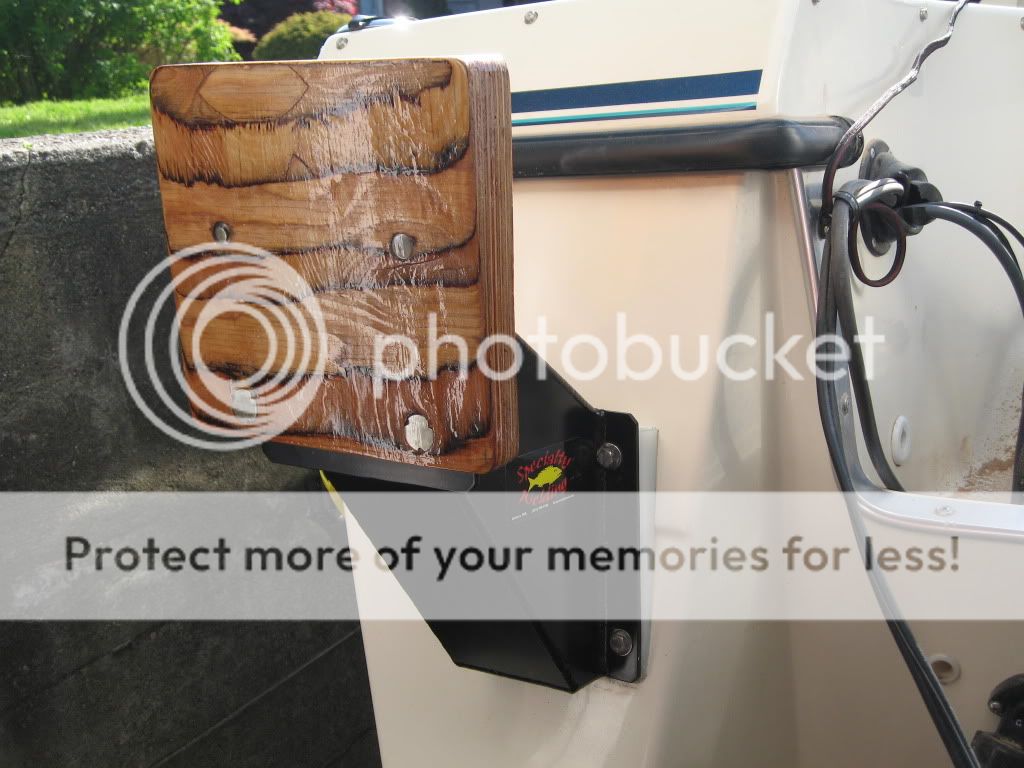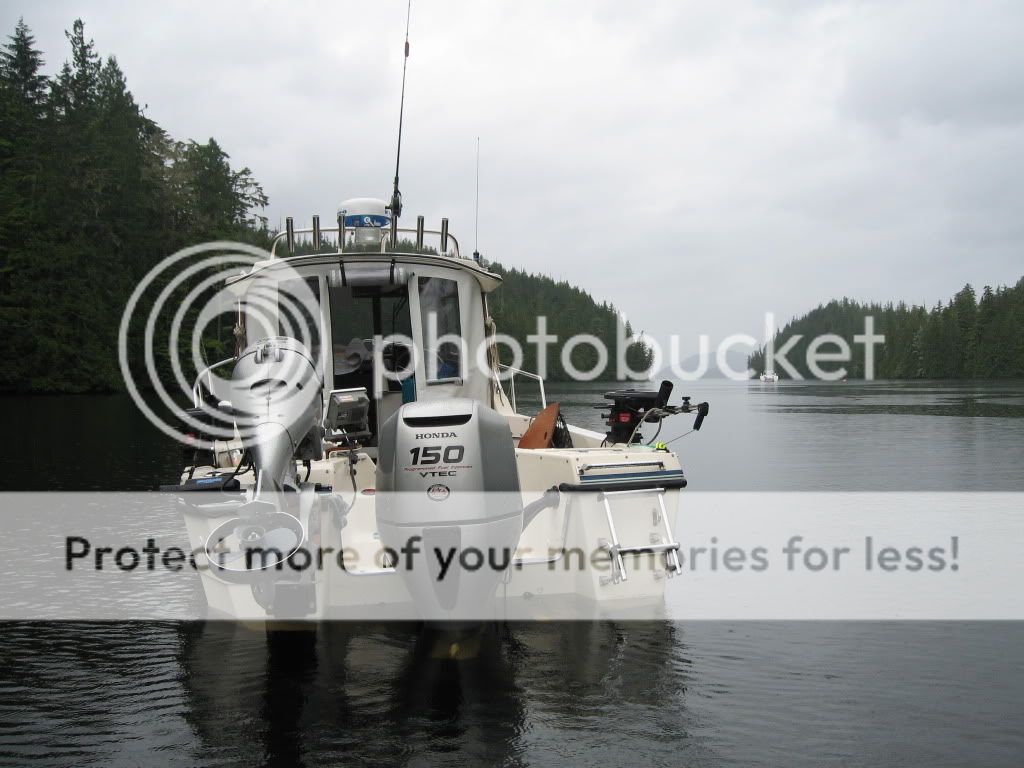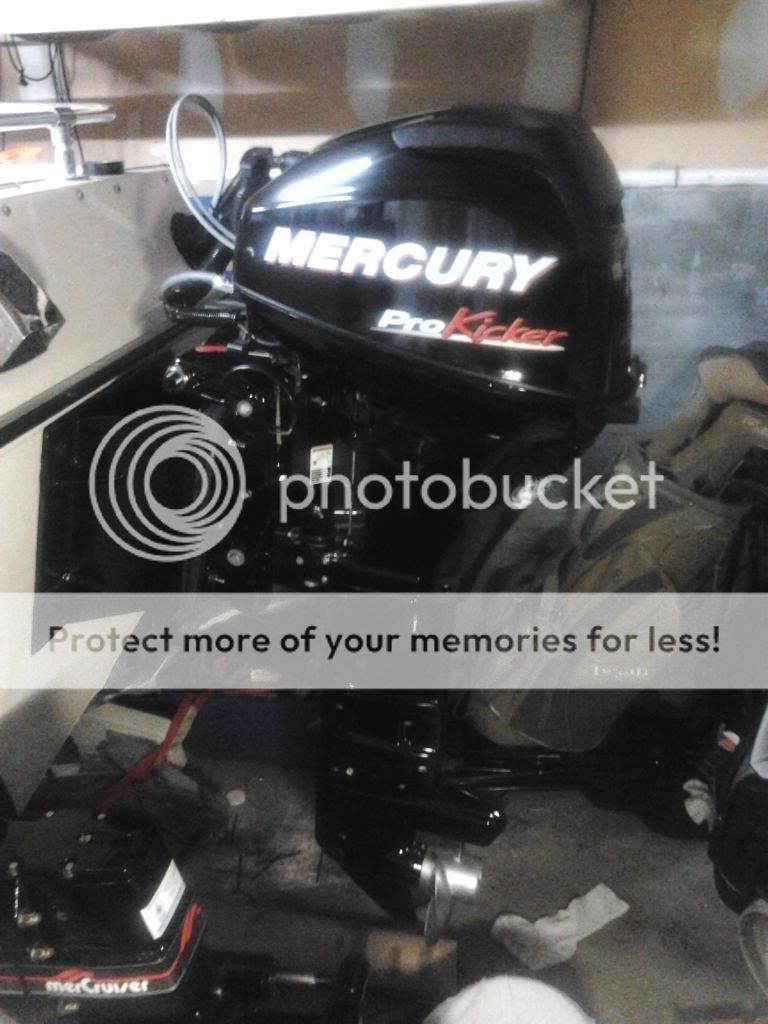sly_karma
Crew Member
I have an old fibreglass Lund 19.5 hull with a transom design that is making it difficult to mount a kicker. You can see from the picture that the transom's engine cutout is very wide and there is not enough room for the kicker to mount next to the main (to give some idea of scale, the rail space to the left of the main's steering linkage is just 9"). There is also little room on the full height portion of the transom, and through-bolting in this area woukld be very difficult as there is a foam floatation cell moulded into the hull in that area.
All the advice I've received to date is to have a custom mount plate made that will mount the kicker in a position roughly centred on the vertical transition from the engine cutout to the full gunwale height. The mount to the transom will be a hybrid - half of it hooked onto the engine mount rail, and part of it through bolted off to port side from where the mount rail ends. I have a welder friend that can make me a stainless or aluminum bracket, but I need some info on clearances and standoff before we design it.
The engine is a Merc 9.9 stroke electric start/remote control, weight 200 lb. It has a 20" shaft, same as the main.
What I'd like to know is:

Thanks in advance for all advice.
Sly
All the advice I've received to date is to have a custom mount plate made that will mount the kicker in a position roughly centred on the vertical transition from the engine cutout to the full gunwale height. The mount to the transom will be a hybrid - half of it hooked onto the engine mount rail, and part of it through bolted off to port side from where the mount rail ends. I have a welder friend that can make me a stainless or aluminum bracket, but I need some info on clearances and standoff before we design it.
The engine is a Merc 9.9 stroke electric start/remote control, weight 200 lb. It has a 20" shaft, same as the main.
What I'd like to know is:
- How far does the mount need to stand off the transom to allow for engine tilt?
- How much offset to port?
- Do I set the mount at the same height as the main?
- Any other design advice re construction, materials, etc?

Thanks in advance for all advice.
Sly







